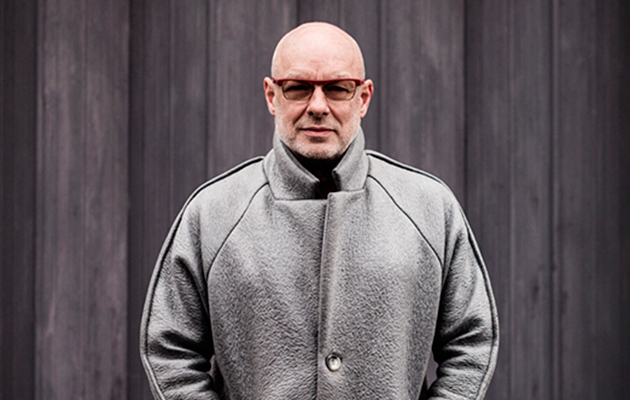
Do you see any parallels between this album and Gavin Bryars’ The Sinking Of The Titanic?
No. Of course, I know that piece very well. I love that piece, actually. I produced the recording of it. In fact, I really started a record label [Obscure] in order to release that album. It was that piece, and on the other side was a piece called “Jesus Blood”.
How did you round up these people on Obscure? Bryars, Michael Nyman, Harold Budd, David Toop, Penguin Café Orchestra. They weren’t well recorded…
When I was at art college, I was very connected to what was then called the experimental music scene. I knew a lot of those people then. Gavin. Michael Nyman. Tom Phillips. I didn’t know David Toop then. John Tilbury, the piano player. I had also met Morton Feldman, Christian Wolfe, Earle Brown. This music scene was tiny. There were about 31 people in it! You’d go to concerts and it would always be the same group of people, we all knew each other. But a lot of these scenes are very, very small. I knew some of the Fluxus people in New York. I always assumed that I knew just a little bit and it was all over the place. But it turned out I knew most of the Fluxus people, because there were very few of them. So one of the things I was very keen on was trying to make some kind of communication between what I saw happening in pop music – in particular, the Velvet Underground, The Who and some of the psychedelic groups – and what was going on in experimental music. I thought there was such a lot of possible friction and sparks could fly. Apart from anything else, I just wanted to introduce that catalogue of possibilities into the public view, as it were.
Your own Obscure release, Discreet Music, came out in 1975, months apart from Lou Reed’s Metal Machine Music. What are the points of comparison between those records?
They were two ends of a spectrum of possibilities that not many other people had explored then. There had been a group of composers who had been experimenting with immersion of some kind. Steve Reich was one, but another very important one who you don’t hear very much about is Charlemagne Palestine, who was a pianist. He used to give these concerts in his loft in New York where he’d sit at his beautiful grand piano and he’d start playing on the same chord and he’d go on and on and on and it would get louder and louder and louder until the whole place rang with this sound. It was an amazing experience. La Monte Young had an installation that used a military specification signals generator and huge amplifiers and produced a pure sine tone at a particular frequency for six months. In concert, the Velvet Underground would sometimes play incredibly long versions of their songs where they’re staying in one sound world, holding it and getting louder and louder and louder – like La Monte Yong. In my case, I wanted to be able to create not just pieces of music but systems to create pieces of music. I used to call them machines, which is funny because of Lou’s Metal Machine Music. But I got the word machine from the English composer John White. Discreet Music is the first piece of machine music that I made. It could be infinity long that piece. It was the length it was because that was the most I could get onto one side of vinyl. Once you set it going, it could keep generating itself. It could still be playing now.
Why did you decide to cover “I’m Set Free”?
I recorded it 12 or 13 years ago, but I changed a little bit for this final version. I’ve always loved the song. It has so many elements of song writing I like, not many chords! Nearly all the songs I really, really like, when I look at them closely, they’re three or four chords. There’s usually a very interesting distribution of the chords. One of the chords on “I’m Set Free”, if it’s a 32 bar sequence, occurs for one bar. It’s the real oddity in the thing.



